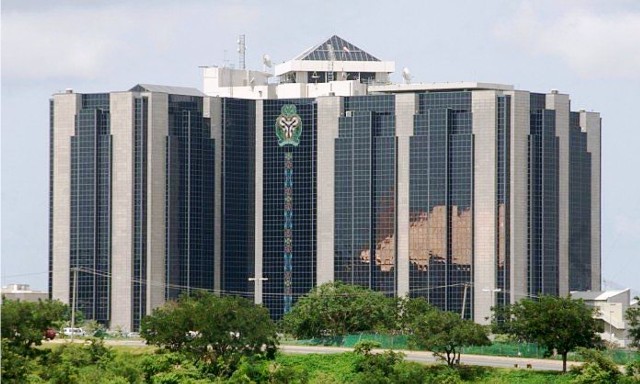Opinion
Making Breastfeeding Work
World Breastfeeding Week is a week-long event ob-served during the first week of August, every year. It was adopted at the millennium summit in 2000. World Breastfeeding programmes have been held at this said time of the year to highlight the necessity, problems and prospects of breastfeeding. At this occasion, awareness of the health and wellbeing outcomes of breastfeeding and the importance of supporting mothers to breastfeed for as long as they wish are raised.
In the previous years, emphasis had been placed on the importance of breastfeeding, especially when carried out exclusively, to the child, the mother and the society at large.
Today, August 7, 2023, is the climax of the programme for this year’s edition of the World Breastfeeding week. With the slogan/theme; “Let’s make breastfeeding and work, work!” the 2023 World Breastfeeding week focused primarily on informing people on the efficacy of a breast feeding regime not predicated on the risk of the nursing mother’s source of livelihood
It showcased the progress made so far and the key gaps in improving breastfeeding and infant and young child feeding (IYCF), while calling attention to the importance of stepping up actions to protect, promote and support breastfeeding, even at work places.
This has become very imperative because; more than half a billion working women are not given essential maternity protections in national laws, Just 20 per cent of countries require employers to provide employees with paid breaks and facilities for breastfeeding or expressing milk, and fewer than half of infants under six months of age are exclusively breastfed. A global network that aims to protect, promote and support breastfeeding around the world, The World Alliance for Breastfeeding Action (WABA), works in synergy with the World Health Organisation (WHO) and United Nations Childrens Fund for Education (Unicef) to get its aid to the right people in the right communities.
Of course there are many different demands on busy mothers, meaning that women who may want to breastfeed their babies have not always got the support to continue this. Busy working schedules, alongside the many other challenges that modern women face can mean that women do not always feel that breastfeeding their child is something that is an accessible option to them. The 2023 date with breastfeeding has unequivocally stated that women, irrespective of where they work, need paid maternity leave. They should be entitled to at least 18-week maternity leave and a maximum of six months. Even paid time-off for breastfeeding or expressing milk upon returning to work.
What this means is that the acknowledgement of the importance of breast milk to the child via breast feeding, can not be overemphasised and so should no longer be consigned to the exclusive domain of the women to deliberate or decide. Instead, it should be of the collective concern of the society at large for which work places must be serious stakeholders. Finally, this year’s World Breastfeeding Week also stimulated interest among young people of both genders to see the relevance of breastfeeding in today’s changing world.
Breastfeeding, it must be noted, is a natural and low cost way of feeding babies and children – it is affordable for everyone and does not add burdens to family budgets compared to artificial feeding for example, with formula. In promoting gender equality and empowering women, breastfeeding has been found to be a great equaliser, giving every child a fair and best start in life. Most differences in growth between sexes begin as complementary foods are added into the diet and gender preference begins to act on feeding decisions.
Talking about reduction in child mortality, this can be readily achieved by about 13 per cent according to research, with improved breastfeeding practices alone, and 6 per cent with improved complementary feeding.
In addition, about 50-60 per cent of under 5-mortality is linked to malnutrition due to inadequate complementary feeding following poor breastfeeding practices.
Concerning improved maternal health, breastfeeding is associated with decreased maternal postpartum blood loss, breast cancer, ovarian cancer, endometrial cancer and the likelihood of bone loss in post-menopause. Breastfeeding also contributes to contraception and child spacing – reducing, maternal risks for example anaemia of pregnancies too close together.
How about ensuring environmental sustainability? Breastfeeding involves less waste compared to formula production involving the diary, pharmaceutical, plastics and aluminum industries and reduces the use of firewood and fossil fuels in the home.
With breastfeeding, a healthier, viable, non-polluted, non-resource intensive source of nutrition and sustenance is assured.
How Far with The MDGs Today? While we take note of some progress, there is still a lot of “unfinished businesses” that require urgent attention by the government. There is no gain saying the fact that progress in achieving the various MDGs is slow with large disparities between regions.From available data, the last 20 years witnessed a reduction in child mortality by 40 per cent, yet almost 7 million children under five die each year and mainly from preventable diseases.
Under nutrition continues to affect about a quarter of all children globally.
However, the entire idea of breastfeeding can be protected by ensuring that women and their families receive scientifically factual information and support that is independent of vested business interests, for example from baby food industry and/or professionals. Implementing and monitoring the code and WHA resolutions will help protect breastfeeding.
It can also be promoted by informing and raising awareness of the importance of breastfeeding and mobilising people to take action especially during world breastfeeding week.
The idea can also be supported by providing access to information, as skilled clinical help and counselling, and practical and emotional backing to mothers to enable them initiate, manage and sustain breastfeeding wherever they are. Maternity protection can help working mothers continue breastfeeding.
By: Sylvia ThankGod-Amadi
Opinion
Ndifon’s Verdict and University Power Reform

Opinion
As Nigeria’s Insecurity Rings Alarm

Opinion
The Girl Who Didn’t Dance
-
Business2 days ago
Shippers Council Vows Commitment To Security At Nigerian Ports
-

 Business2 days ago
Business2 days agoCBN Revises Cash Withdrawal Rules January 2026, Ends Special Authorisation
-

 Business2 days ago
Business2 days agoNigeria Risks Talents Exodus In Oil And Gas Sector – PENGASSAN
-
Business2 days ago
NCDMB, Others Task Youths On Skills Acquisition, Peace
-

 Business2 days ago
Business2 days agoFIRS Clarifies New Tax Laws, Debunks Levy Misconceptions
-

 Politics2 days ago
Politics2 days agoTinubu Increases Ambassador-nominees to 65, Seeks Senate’s Confirmation
-
Sports2 days ago
Obagi Emerges OML 58 Football Cup Champions
-

 News2 days ago
News2 days agoTinubu Swears In Christopher Musa As Defence Minister

